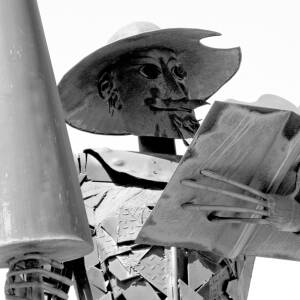Santa Eulalia de Abamia, Corao, Asturias
The 8th century king of Asturias, the vizigoth Pelayo, and his queen Gaudiosa, were buried for the first time in the year 737, in a church at this spot, which was built within the area of a necropolis. Their remains were moved at some point to Cangas de Onís (at that time the capital of Asturias), and later to Oviedo. The church of Sta Eulalia is first recorded by name in the year 926. At that point the structure will have been pre-romanesque, though it´s decorative aspects now are conspicuously romanesque.
The main picture looks west towards Oviedo, showing the south door. Unusually, the south door is a lot more decorative on this church than is the west door, though that may well be the result of substantial re-builds, which have certainly occurred.
Extra 1 shows the arch over the south door. The arch depicts the transit of a soul from death onwards - extra 2 shows the poor deceased burning in hell. Extras 4, 5, 6 and 7 show capitals, incidentally showing specimens of the Green Man. 10 and 11 are small details (the corbel in 11 may be a self-portrait by the original mason), and 12 is the conspicuously pre-romanesque east window.
I´ve tried to make the photos decorative rather than trying to be scientifically illustrative. The church I tthink ought to be a romanesque treasure, but informed opinion is that the reconstructions have not been faithful enough to its origins, and there were a lot of objections raised when it was most recently restored. The Bishop appears to have responded by abandoning the church, leaving it locked and with its interior inaccessible. It sits high on its hill, above the cemetery, some two or three km of steep, narrow, and not-good road outside the nearest town, which is Corao, effectively abandoned.

Comments
Sign in or get an account to comment.


